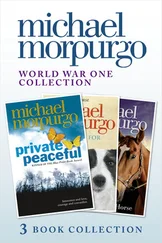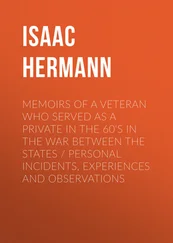Colvin quickly became the Middle East correspondent. Patrick Bishop, then the paper’s diplomatic correspondent, encountered her in Iraq, in 1987, monitoring the Iran-Iraq War. Bishop recalled, “There was a bit of shelling going on, and I was anxious to impress her by pointing out the distinction between outgoing and incoming fire. I explained that the bang we had just heard was outgoing and therefore nothing to worry about. Then there was another explosion. ‘And that one,’ I said, ‘is incoming! ’ and threw myself headlong on the ground. As the shell exploded some distance away, I looked up to see the woman I had been trying to show off to, gazing down at me with pity and amusement.”
As Bishop was leaving Iraq, he spotted Colvin trying to sneak off to the front. “Don’t think of going there,” he told her. “It’s much too dangerous.” She ignored him. “The next thing I know is I see the Sunday Times , and there was Marie, inside the lines in Basra,” said Bishop.
Next, disguised as a Jewish settler, she got her nose broken when Palestinian demonstrators threw a rock through the window of her car. Then she interviewed Yasser Arafat, who invited her to travel with him on his plane. Those interviews would be part of a BBC documentary on his life that Colvin wrote and produced. He would give her twenty-three more interviews, and she accompanied him to the White House with Yitzhak Rabin. “Just put the pencil down and sign it already,” she reportedly told Arafat during the Oslo peace accords of 1993.
She and Bishop were married in August 1989, and the marriage looked like a true love match. Both reared as Catholics, the couple shared a solid middle-class background, parents who were teachers, and families who stressed intellectual achievement. The pressure of war reporting, however, affected them in different ways. Not long after they were married, Colvin discovered that Bishop was having a dalliance with a European journalist. In Iraq, she struggled with reports of his betrayal, but they stayed together. “She would howl into the phone, shouting at him,” recalled the reporter Dominique Roch. Colvin never unpacked her wedding presents, which remained in a jumble under the staircase in her home.
That marriage was followed in 1996 by another, to Juan Carlos Gumucio, a well-born Bolivian journalist working for the Spanish newspaper El País . “I’m going to have a baby!” Colvin announced to her friends. “That is my dream.” Instead, she had two miscarriages, and her volatile new husband proved to have a massive appetite for disputes and alcohol. They separated, and in 1999 Bishop flew to Albania, worried about Colvin’s safety in covering Kosovo. “I arrived convinced she was in desperate trouble only to be told that she was at the bar briefing young reporters on the local dangers.” They quickly reunited.
Later, in East Timor, the writer Janine di Giovanni saw them happily sitting on a wall in Dili in the midst of the turmoil in the burning capital. “Marie was wearing a pair of white short-shorts and calmly reading a thriller. She looked like an Irving Penn portrait of Babe Paley.”
In 2002, Bishop and Colvin were still together when they learned that Gumucio had committed suicide.
¬
“I wake up now many mornings with a slab of cement on my chest,” said Sunday Times foreign editor Sean Ryan the day we met, not long after Colvin died. The hardworking Ryan was elevated to run the foreign desk in 1998. Though he had done some feature writing from Kosovo and Israel, he had never actually been posted in a war zone. He had occasionally worked on Colvin’s stories from Iraq in 1991, when they appeared on the features pages, but soon they were speaking every day, sometimes for an hour. Ryan would now supervise the foreign staff as the paper intensified its personal coverage in order to compete with cable news and the tabloidization of the Murdoch press.
One morning in December 1999, he heard Colvin’s voice on the BBC, describing the siege going on in East Timor. “My stomach started churning,” he told me. For the next four days, he demanded copy, but Colvin never filed. She was, she said, too busy helping refugees contact their families. “That was life with Marie,” he said. “She was a crusader most of all.”
A few months later, Ryan’s phone rang. “Hey, Sean, I’m lying down in a field, and there’s a plane circling overhead. I’ll call you back.” Colvin was in the middle of another bloodbath, on the Russian border with Chechnya. Before she left, Bishop had angrily warned her, “You will get stuck there if you go to that massacre. The Russians are targeting journalists.” Bishop was frightened about the danger Colvin would face. For years he had called his friend Witherow repeatedly to pull her out of battle areas. “You cannot allow Marie to do this,” he had said in 1991, when she was one of the first British journalists inside Iraq in the early stages of the Gulf War. “She doesn’t want to come back,” Witherow answered. “Order her,” Bishop said.
When she landed in Georgia, she was drunk, her Russian photographer, Dmitry Beliakov, later told the Sunday Times . “The Chechens who came to take us were shocked. She was a woman, and it was Ramadan. The next morning she knocked on my door, pale from a hangover, and we talked. Or she talked and I listened. It was clear she knew what she was doing. She said, ‘If you aren’t sure of me, don’t go.’”
After Colvin was smuggled into Chechnya, the leader would not shake her hand, because she was a woman. Colvin told him, “There is no woman in this room, only a journalist.” She found children who had been shot by drunken Russians for their amusement. When the car she was in was blasted by shrapnel at night, she fled into a field of beech trees. It “felt like a death trap,” she wrote in her report. “I spent 12 hours yesterday pinned down in a field by a road The planes, evil machines… circled again and again… dropping bombs that whined as loudly as high-speed trains as they fell.”
Bishop flew to Tbilisi, the Georgian capital, to help with her rescue. Colvin’s only way out in subzero temperatures was across a twelve-thousand-foot mountain range. A Chechen guide took her and Beliakov zigzagging up sheets of ice. Colvin was carrying a computer and a satellite phone and wearing a flak jacket, a weight of thirty pounds. At one point, Beliakov threatened suicide. At another, Colvin plunged into icy water. She jettisoned the flak jacket and kept the phone. It took them four days to reach the border and cross over into Georgia. They found an abandoned shepherd’s hut, but their only food consisted of three jars of peach jam and some flour, which they mixed with fetid melted snow into a paste.
Bishop and the senior correspondent Jon Swain beseeched the American Embassy for help as Colvin fled the hut. Her party stumbled for days through a series of deserted villages. Suddenly she saw “an Ernest Hemingway figure,” who said, “Jack Harriman, American Embassy. Are we glad to find you.” Reunited with Bishop, Colvin later made light of it all. When she joined her friend Jane Wellesley at her country house for New Year’s, she said, “If I hadn’t had this hideously expensive anorak you made me buy, I wouldn’t have made it.”
“YOU ONLY CRY WHEN YOU BLEED”
“So, this Oyster Bay—what kind of place is it?” the poet Alan Jenkins once asked Colvin of the town near where she grew up. “Oyster Bay? It’s just a little fishing village,” she said, and laughed when Jenkins later discovered it was an area filled with the very rich and social. In fact, Colvin came from East Norwich, the solidly middle-class next town over. At Yale, Colvin confided to close friends that she often felt insecure among her classmates. During high school, she had worked at the local yacht club for spending money. Her mother, Rosemarie, the first college graduate in her family, had grown up in Queens and fallen in love with a handsome Fordham student who was also studying to be an English teacher. Just out of the Marines in World War II, Bill Colvin was passionate about literature and Democratic politics. “My parents had a storybook marriage,” Marie’s younger sister Cathleen, known as Cat, now a corporate lawyer, told me. “Our father doted on Marie.” The oldest of five children, Marie filled the house with her projects—fruit flies, architectural models. At night, Bill read his children all of Dickens and James Fenimore Cooper. Weekends, he packed the family into the car and drove to political rallies. A passionate Kennedy supporter, Bill later worked briefly for New York governor Hugh Carey.
Читать дальше












